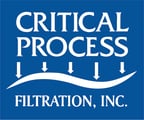Working with the CPF Technical Team, the customer designed and installed a 3-stage filtration process that resulted in the customer completing development and bringing the new enzyme product into production.
Background
A biopharmaceutical manufacturer was developing a process to create an enzyme product. During development, the manufacturer identified the need for bioburden reduction on an intermediate enzyme solution. Several filter suppliers were approached and asked to perform tests and recommend the filtration steps required to meet the manufacturer’s specifications. Testing was to be done at a laboratory scale to support the scale-up of the process to full production volumes.
The Filtration Challenge
- The solution had a high level of particulates and a very high turbidity
- Bioburden levels were too high
- The filtration required to remove particles and control bioburden could not affect protein levels or protein activity of the solution
Application Testing at the Customer Site
 A CPF Technical Service team (and similar teams from other filter suppliers) visited the customer facility to conduct initial screening tests using potential media and membranes. The customer provided two batches of the intermediate enzyme solution made on separate dates for this testing.
A CPF Technical Service team (and similar teams from other filter suppliers) visited the customer facility to conduct initial screening tests using potential media and membranes. The customer provided two batches of the intermediate enzyme solution made on separate dates for this testing.
Because of the limited amount of solution available, initial screening was performed using filter discs. The solution was fed through the filter discs at a constant flow rate, and the volume filtered to reach a pre-determined terminal pressure drop was recorded. The filter media tested during this field trial included:
- Polyethersulfone (PES) Membrane
- Polypropylene Membrane
- Three Fiberglass Depth Media options
- Three Polypropylene Depth Media options
The solution was passed through each media option individually, then filtrates from media showing promise as a pre-filter were passed through possible final bioburden reduction membrane options to test throughput. During this testing, the CPF team gathered enough data to recommend a filter train consisting of:
- A high pore size pleated Polypropylene Depth media
- A small pore size pleated Polypropylene Depth media
- A bioburden reduction grade PES Membrane
The customer tested the filtrate from these tests to ensure the filtered enzyme solution met their specifications. After reviewing the data and recommendations from the Critical Process team, and comparing this with results from the other filter suppliers, the customer determined that the CPF filters resulted in superior performance. The decision was made to send additional enzyme solutions to CPF for application optimization testing.
Optimization Testing
It was decided to evaluate two possibilities during optimization testing in the CPF Applications Lab:
- Filtering the intermediate enzyme solution that was used during the initial field trials to verify the results and optimize scale-up to production size batches
- Filtering the fully formulated product as this might eliminate the need for filtering any other intermediates
During discussions between the customer and the CPF team, it was decided that option 2 was preferable if it could work.
The customer sent batches of each that were produced in their facility with no filtration.
- Testing on the intermediate solution yielded almost identical results as the field testing. The recommended filtration chain for this intermediate solution was the same as from the field trials, and enough data was collected to allow scale-up.
- Testing on the fully formulated product showed that all the media options identified for the intermediate solution clogged faster when filtering the final product. To identify the appropriate filtration chain several media were evaluated as pre-filters:
- Three Polypropylene Depth Media
- Two Fiberglass Depth Media
- High Capacity Polyethersulfone (PES) membrane
The filtration train that worked best for the final formulation was identified:
- A high pore size Fiberglass Depth media
- A small pore size Fiberglass Depth media
- A submicron pore size high capacity PES membrane
- A bioburden reduction grade PES membrane
Sufficient data were collected using this combination to allow scale-up to production size batches.
Customer Confirmation Testing
Samples of filtrate from the recommended filter train were evaluated by the customer and found to meet all specifications, including turbidity, bioburden level, protein concentration, and protein activity. This confirmed that the final solution could be adequately filtered to meet the customer’s requirements and eliminate the need for filtering intermediate solutions.
Solution Implementation
Working with the CPF Technical Team, they custom designed and installed a 3-stage filtration process consisting of:
- High pore size Fiberglass Depth filters
- Small pore size Fiberglass Depth filters
- Bioburden reduction grade PES membrane filters with integrated high-capacity PES pre-filter
Implementation of this filter system resulted in the customer completing development and bringing the new enzyme product into production.
